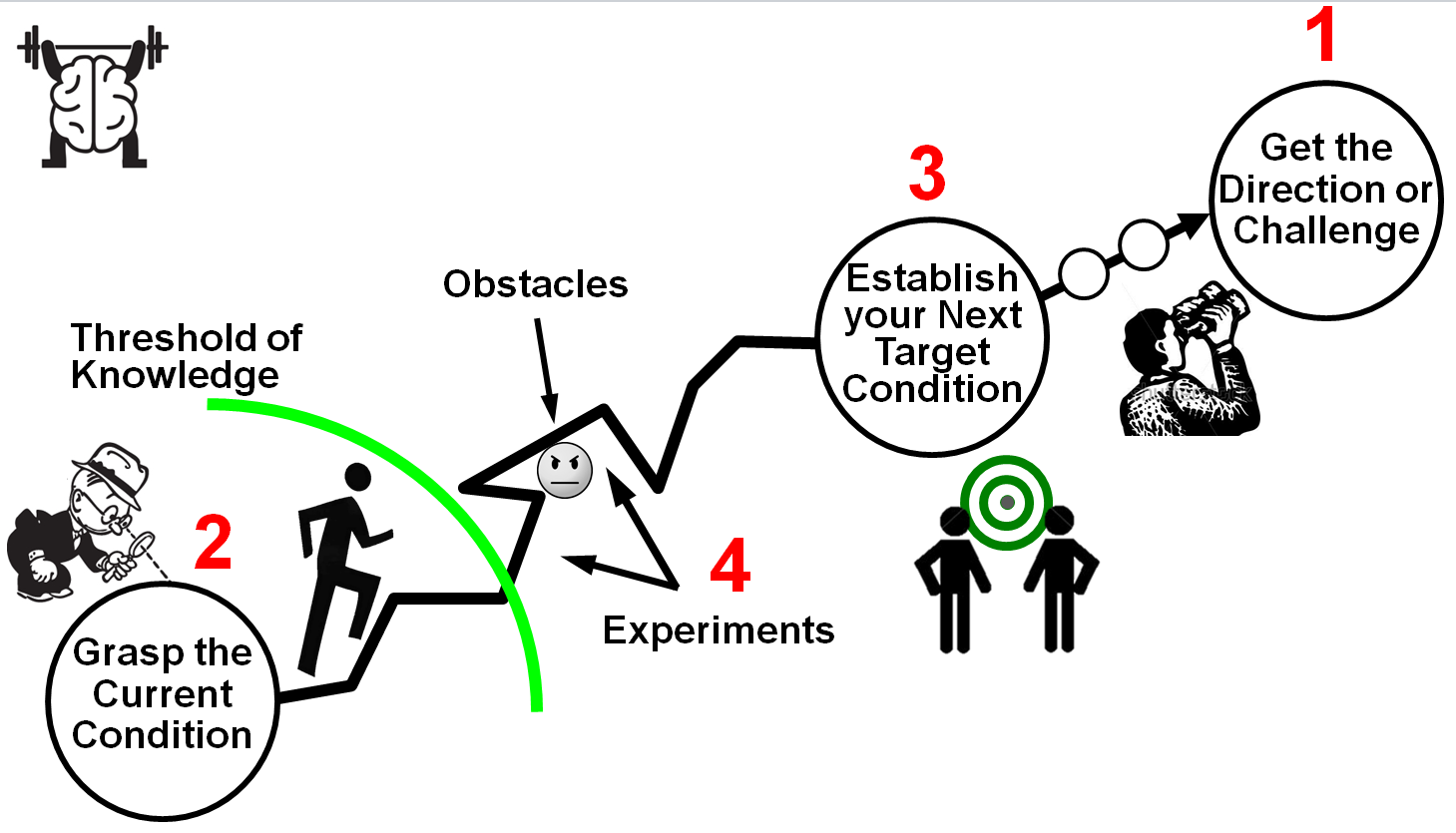[contentblock id=46 img=html.png]
 What is Kata Process Improvement?
What is Kata Process Improvement?
When owning a business, success is obviously the number one thing on any business owners mind. There are many different routes that can be taken to get to the top. One of the new and inventive ways to run a successful business involves the Kata improvement process. Kata is a Japanese invented way to make a business more productive through thinking. It might seem kind of obvious at first; just thinking to solve your problems, but realistically it is much more complex than that.
Every business runs into challenges along the way, and how they handle those problems determines whether it makes or breaks them. It turns out that one of the best ways these problems can be solved is by training the brain to start using a scientific thinking method, not just when a problem comes up, but before the problem even occurs. By being able to think through things that have not even happened yet, you could save your company thousands of dollars. Before you can begin using the Kata improvement process, it is crucial to understand how the scientific thinking process works.
Our brains do not naturally use the scientific thinking process, it is something that needs to be done actively or trained. When we use our brains to process problems, we have a bad habit of filling in the blanks without having all of the facts. The scientific method of thinking allows you to anticipate problems, come up with real solutions to these problems before they occur, and plan accordingly. Most of the time when faced with a real problem with no insight, the knee-jerk reaction is to do something to solve the problem without understanding why it is happening, what solution is going to prevent it from happening again, and understand why it initially happened.
The Kata process has four steps:

- Define the Challenge – First, you have to acknowledge the problem at hand, or at best know what real problems might arise. It could be something small, or catastrophic, as long as it is a real problem that could occur within your company, it is not off the table. If we look at it from a positive perspective, where do you want to be in 6 months or 5 years in the future?
- Grasp Current Condition – After the problem has occurred or at least been identified, you should work on step two, grasping the current condition (where are we at today?). Take this time to consider the issue, why it occurred, and if you were ready for it when it happened. If you were not ready, you were not thinking about the company with a scientific mind, it might be time to expand your line of thinking just a little bit more. This is the step where we often skip ahead, and do not take time to understand why we are at the current state. This reflection will help us understand how we need to change to move forward. Sometimes the change is more about behaviors and attitudes, not processes and procedures.
- Establish Target Condition – Step three is to think about what you want to happen as a result of this obstacle or area of opportunity in the short term. By the time you are finished, you should have some notion of what the end result ought to be. As an example, if you noticed the waste in your company going up three times what it used to be, your goal should be to get it down to at least what it used to be, if not less. Your challenge in Step 1 might be to reduce the overall waste to 50% of the original amount, but we set the next target to get back to where we were. There will be multiple targets to get to our challenge, so don’t try to reach it all at once. Now that you know where you want to be in the long term (Step 1), where you are today (Step 2) and where you need to be in the short term (Step 3), it is time to move on to the last step of the Kata improvement process.
- Determine solutions – Start experimenting to get to a working solution. Do not be discouraged if it is not resolved right away, because sometimes it takes time. There are solutions for virtually every problem out there. The only way you can overcome it is if you take a scientific and logical point of view. You are striving to get a solution that is not only going to solve your problem, but prevent it from happening in the future. This may take many small, daily experiments and improvements, so don’t look for one “silver bullet.”
It can be a challenge to grasp the scientific thinking process when it comes to Kata process improvement. However, once it has been mastered the growth possibilities for your company are virtually unlimited.
You can read more on this topic: What Organizations are Using Kata? and Relationship between Kata and Kaizen
If you’d like to download a one-page summary of the Kata method from Mike Rother, visit his Improvement Kata Downloads page.










This was very helpful.